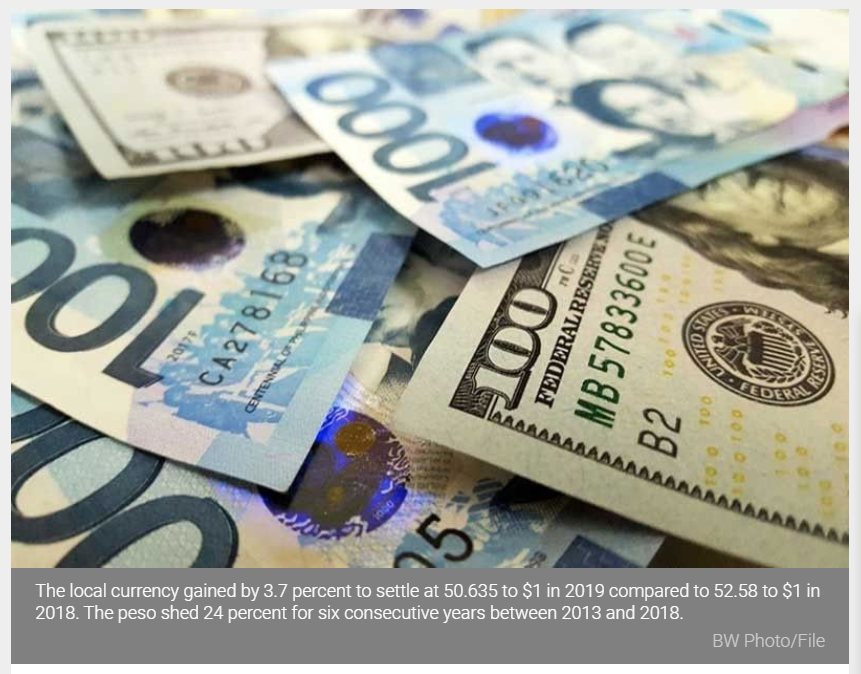Philippines: MUFG sees weaker peso at 52 to $1
MANILA, Philippines — The peso may weaken to 52 to $1 this year as the country’s current account deficit balloons on falling remittances from overseas Filipino workers (OFWs) and tourism receipts amid the coronavirus disease 2019 or COVID-19 pandemic, according to Japan’s largest bank MUFG Bank Ltd.
Leong Sook Mei, ASEAN head of global market research at MUFG, said the peso has so far managed to hold out so well despite the contagion, trading at a 29-month high of 50.26 to $1 on May 13.
Leong said the peso is among the best-performing regional currencies with a marginal 0.2 percent loss year-to-date and a 1.5 percent gain against the dollar since Luzon was placed under enhanced community quarantine to contain the spread of the virus.
The local currency gained by 3.7 percent to settle at 50.635 to $1 in 2019 compared to 52.58 to $1 in 2018. The peso shed 24 percent for six consecutive years between 2013 and 2018.
Factors behind the strength of the peso since last year include the country’s net external creditor position, relatively low government debt to gross domestic product (GDP) ratio as well as the structural nature of the economy that is not as heavily exposed to foreign trade, tourism, China and risk flows versus its regional peers.
MUFG said that outflows from foreign portfolio investors intensified in March by $961 million from a net inflow of $40 million in February.
“Even as it held out better, we still forecast a depreciation trek for the peso against the dollar this year to 52 by year-end,” Leong said.
She said the Philippines is still not out of the woods yet in COVID-19 containment and the current account deficit may widen to over 1.5 percent of GDP this year from just 0.2 percent of GDP last year.
Leong also said that lower OFW remittances and tourism income as well as weak export performance would bloat the country’s current account shortfall.
“Lower OFW remittances from US-stationed, sea-based, and Middle East countries will see diminished current transfers with a lag although certain business process outsourcing revenues may hold out better as most are still allowed to operate amid the lockdown,” Leong said.
Beyond COVID-19 in the longer term time frame, MUFG’s base case is for a return to growth initiatives which should still see peso staying on a depreciation path with the current account deficit expanding on the back of higher imports of capital goods and raw materials amid an increase in infrastructure spending.
Source: https://www.philstar.com/business/2020/05/18/2014692/mufg-sees-weaker-peso-52-1


 Thailand
Thailand




